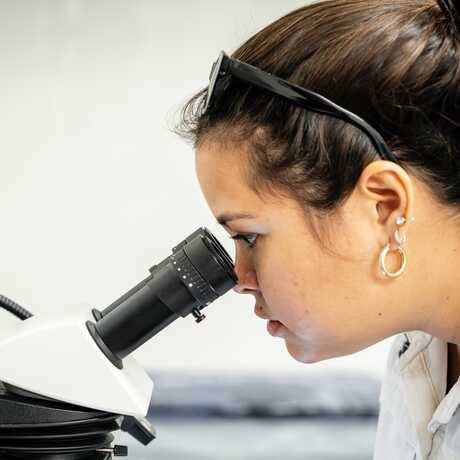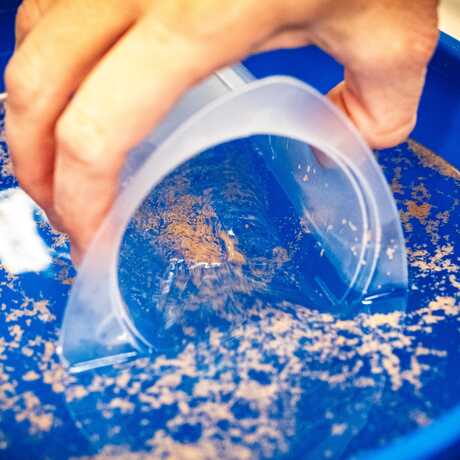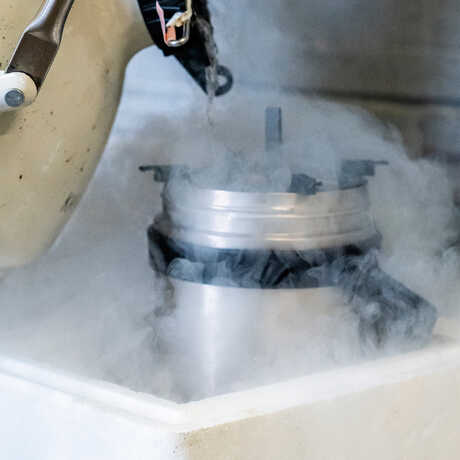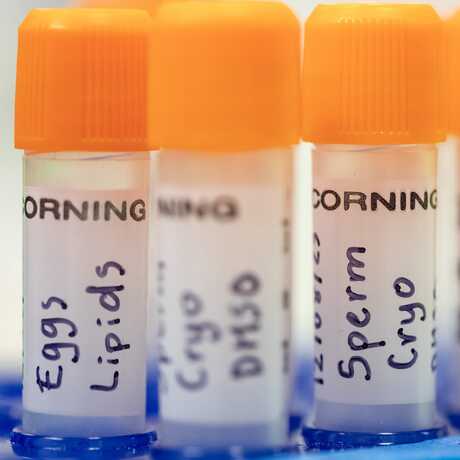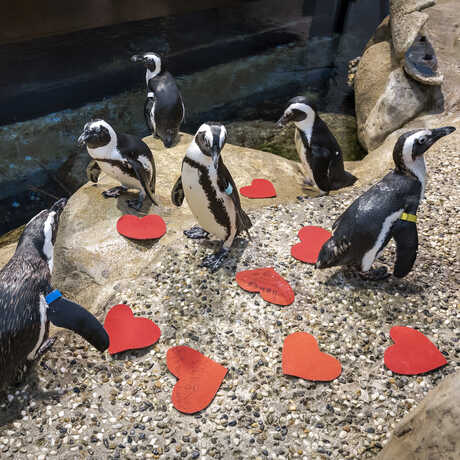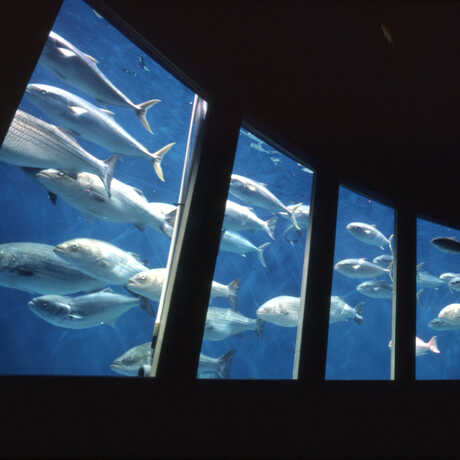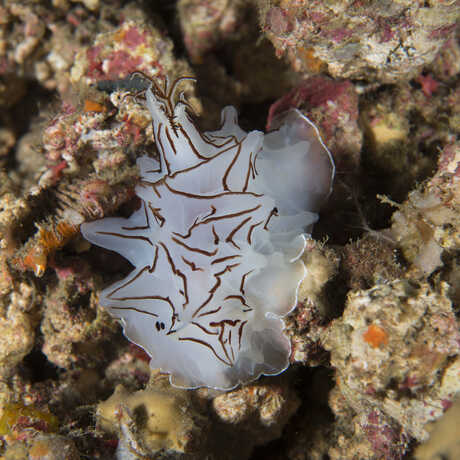The Coral Whisperers

In December of 2023, the Academy’s Coral Regeneration Lab (CoRL) welcomed thousands of coral babies during its annual two-week spawning event—the most successful spawn to date. Now, the new generation of young Acropora millepora corals is playing a critical role in coral research projects at the Academy and beyond that seek to regenerate our planet’s rapidly degrading reefs.
KQED's Deep Look joined the CoRL team in the lab to document the spawning event in mesmerizing HD. Watch the snowglobe-like spectacle below as a flurry of coral gamete “bundles” are released into the water column, and scroll down for a play-by-play of spawning day (including a curated playlist) by CoRL founder Rebecca Albright.
As rising sea temperatures, increased ocean acidification, and other climate-related threats continue to push coral reefs towards their tipping point, lab-based spawning not only bolsters coral populations but also allows researchers to genetically select for heat-tolerant corals that are more resilient to environmental change.
But how do you spawn corals off the reef? As serene as this scene appears, prompting corals to spawn in an aquarium is delicate work. Triggered by simulated lunar cycles and ultra-specific water temperatures, corals reproduce spontaneously within a two-week window.
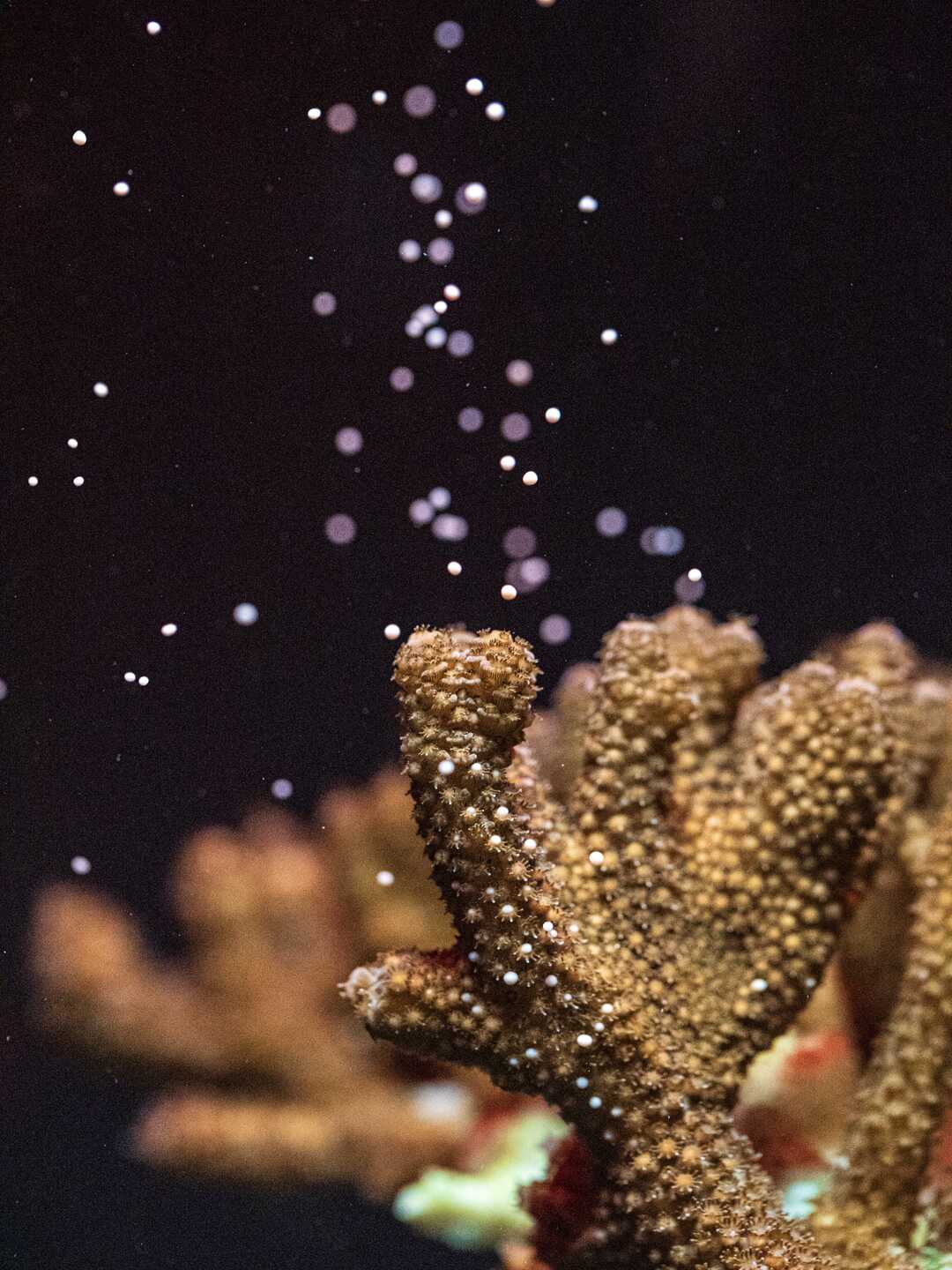
A coral colony releases couscous-shaped gamete bundles. Each bundle contains five to seven eggs surrounded by sperm.
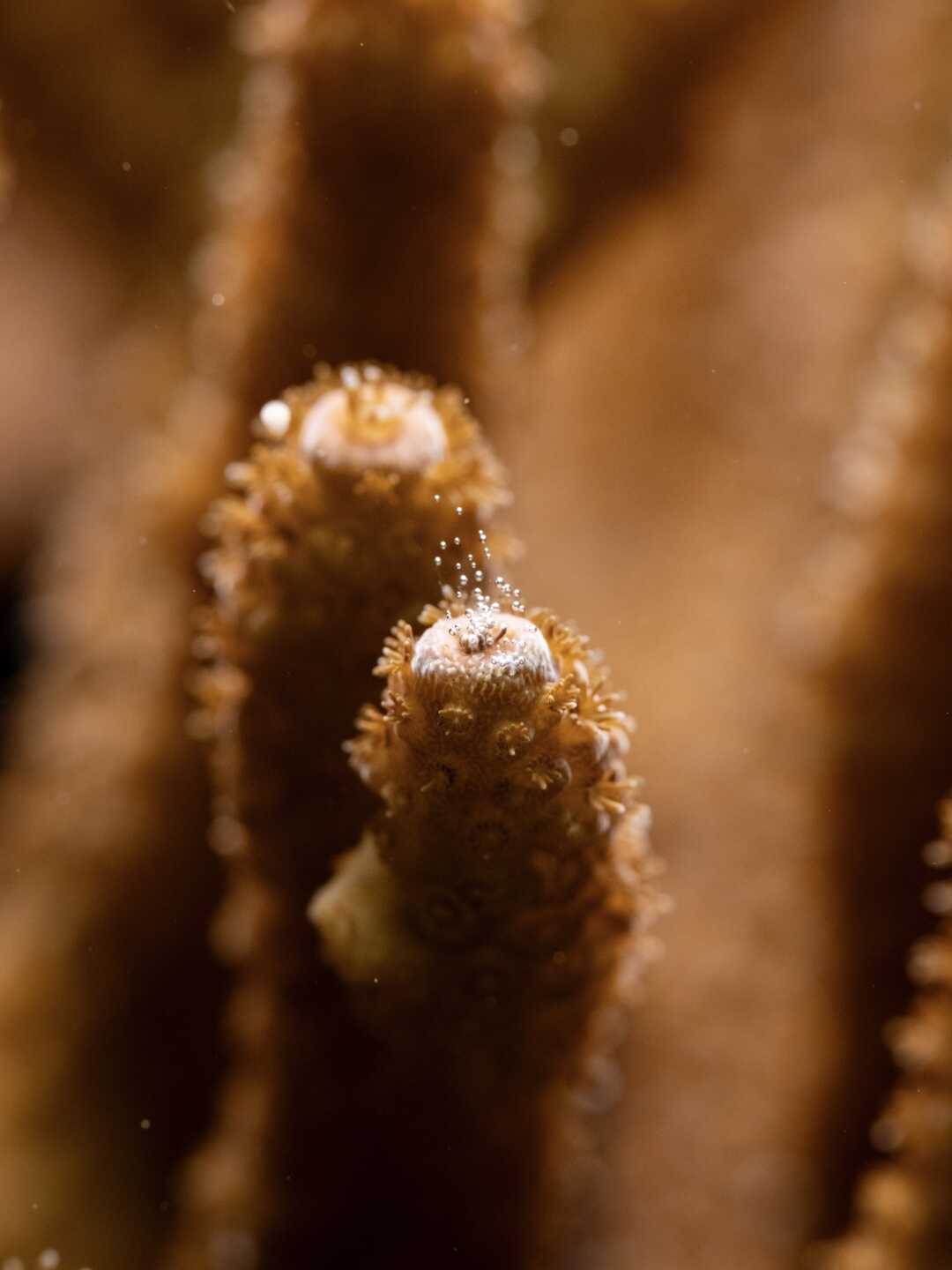
CoRL researchers pay close attention to the polyps lining the coral colony's calcified skeleton as they wait for the spawning event to begin.
To usher in the latest generation of corals, the team stuck to a rigid schedule each day of the “coral spawn-a-thon."
Grab red flashlights and check for "setting" activity, where gamete bundles are starting to emerge from their parent coral's polyps. Once the corals begin to set, place nets over the colonies to catch the gamete bundles as they are released. Check back every 15 minutes—and don't let the net touch the coral!
- Track 1 of Rebecca Albright's official Coral Spawn-a-thon Spotify playlist: "Dancing in the Moonlight" by King Harvest
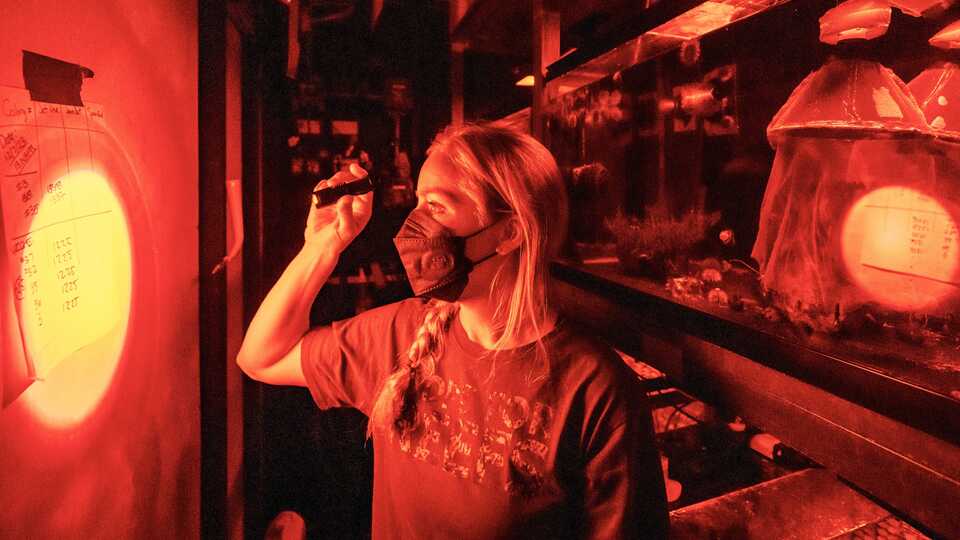
Wild Acropora corals spawn at night, so Rebecca Albright works under red light, which simulates darkness for the coral colonies.
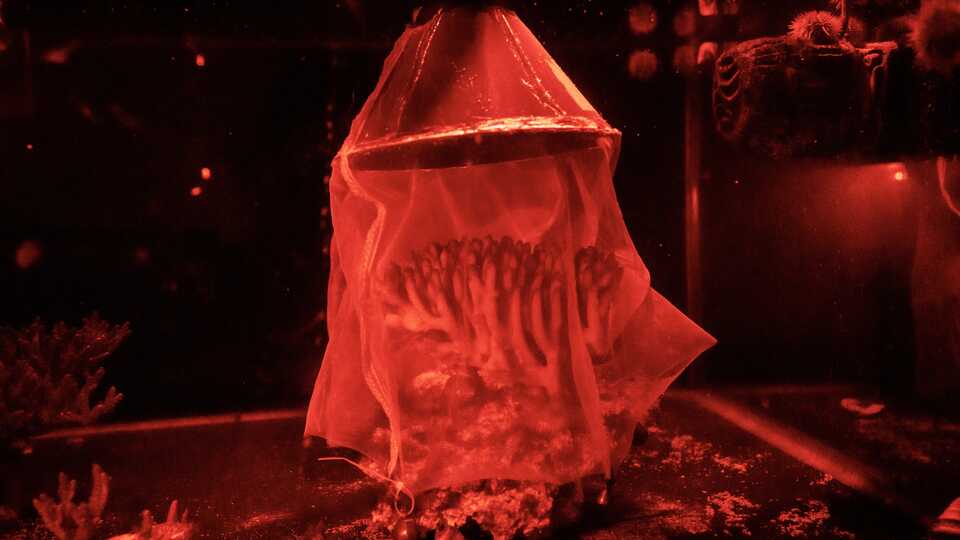
Researchers place a net over each coral colony to catch gamete bundles as they are released.
The team is about one hour away from the predicted spawning window. Prepare a saltwater bath to hold the incoming bucket of gametes where fertilization will occur. Stare at the tank and wait for spawning to begin.
- Track 2: "How Deep Is Your Love" by PJ Morton
Ooh and aah at the breathtaking scene, because even after six years of lab-based coral spawning, it never gets old. Gently nudge the couscous-shaped gamete bundles into collection tubes and bring them over to the working space. Using a pipette, collect the remaining bundles from the tank.
- Track 3: "Turn Your Lights Down Low" by Bob Marley & The Wailers

Every day, each member of the CoRL team tapped a "BELIEVE" sign taped over the lab's door for good luck—an homage to the ever-optimistic titular character of the TV series Ted Lasso.
Using liquid nitrogen, sample and freeze sperm for the Academy's first cryopreservation trial of coral sperm. Then, sample and freeze eggs to evaluate the gamete quality of wild versus captive eggs. Combine all remaining eggs and sperm into the saltwater fertilization buckets to encourage as much genetic diversity as possible.
- Track 4: "Let's Get It On" by Marvin Gaye
Gently scoop coral zygotes, or fertilized embryos, off the surface and transfer them to filtered seawater to continue developing. This separation removes excess sperm, which would otherwise lead to poor water quality. Anxiously await cell division.
Look through microscope: If embryos have 2-4 cells, fertilization was successful. If 90% of embryos were successfully fertilized...dance it out, because we have a new generation of coral babies! Catch up on data entry, clean the lab, and Doordash a pizza.
- Track 5: "Can't Take My Eyes Off of You" by Lauryn Hill
Kiss coral babies goodnight and say a little prayer that they make it to the morning. Get a few hours of sleep before coming in at 6 am to do it all over again. Tap the “BELIEVE” sign on the way out.

